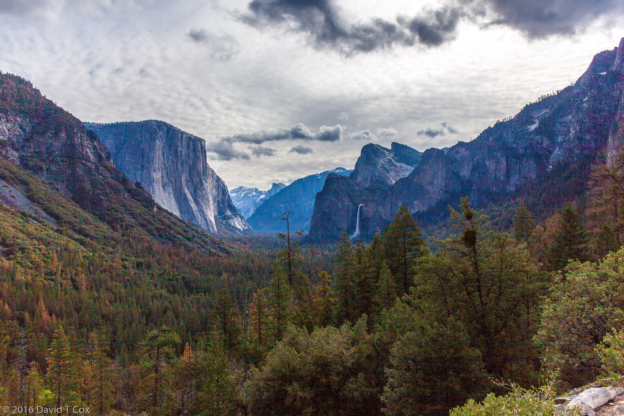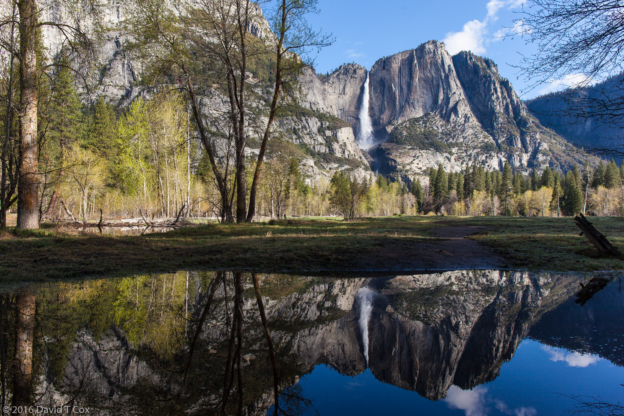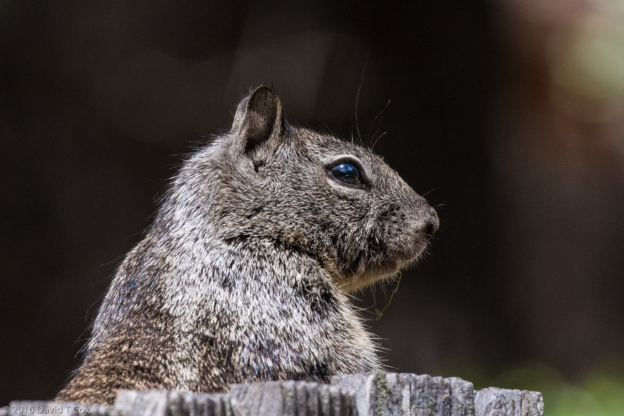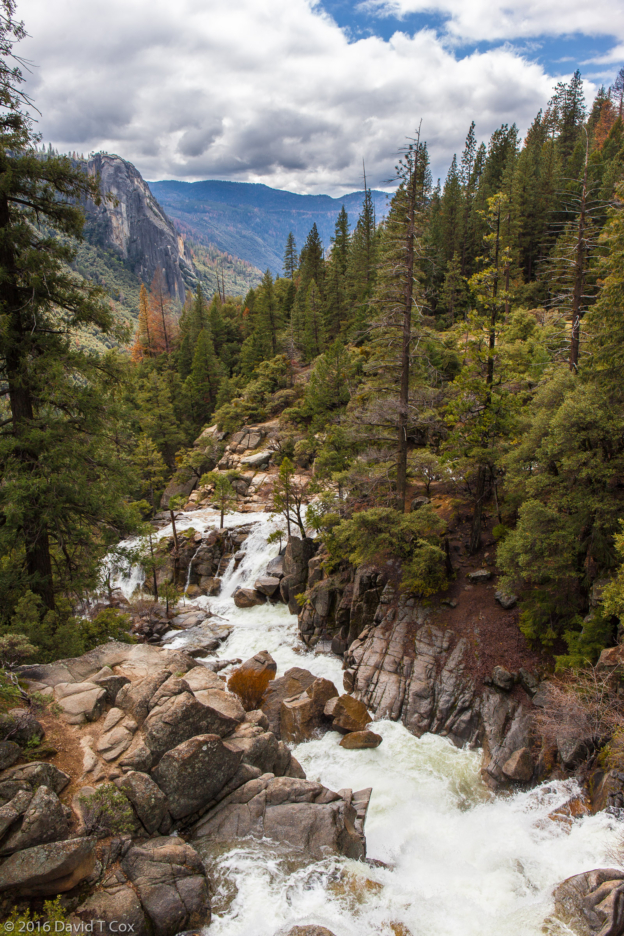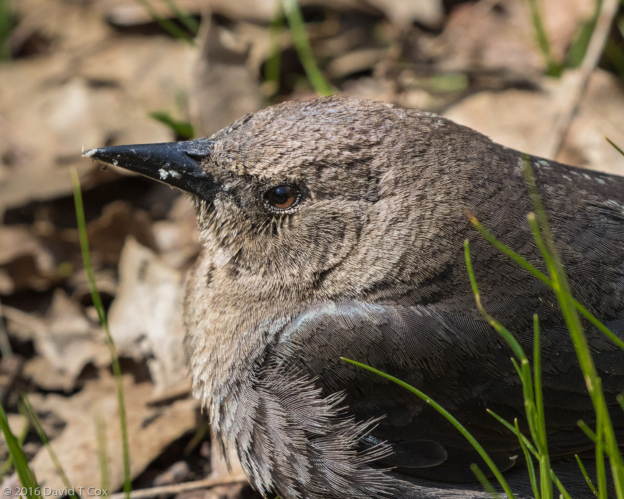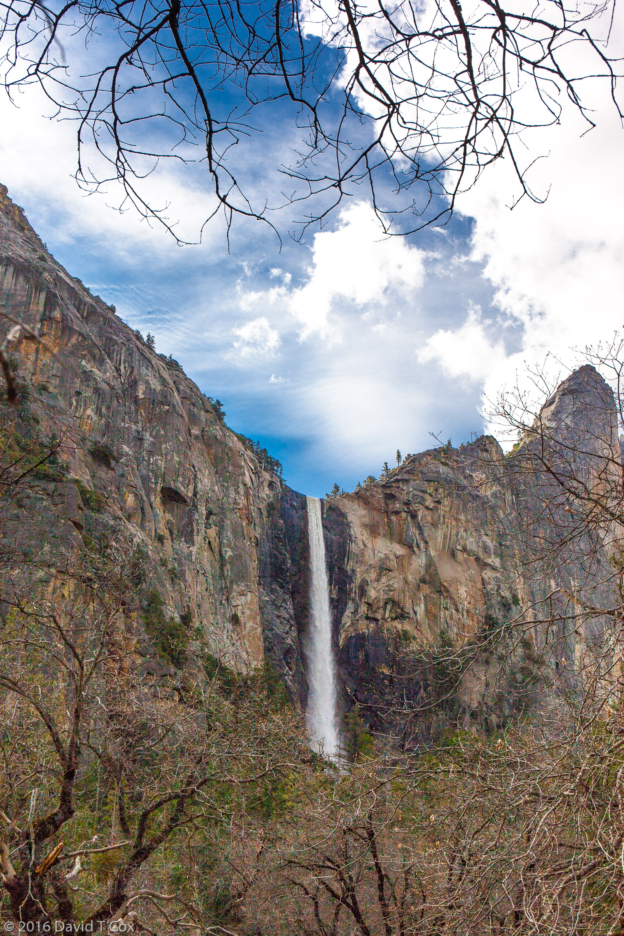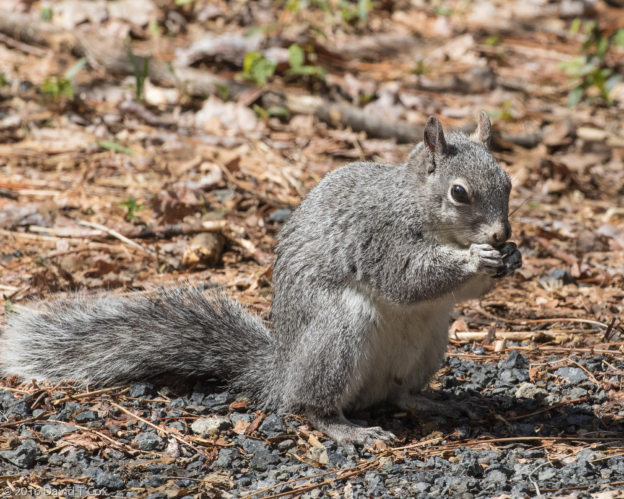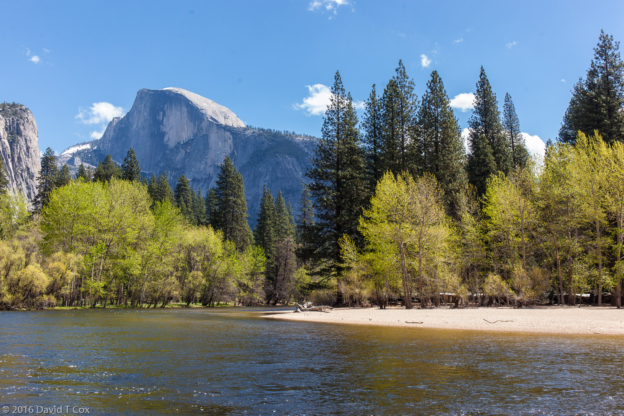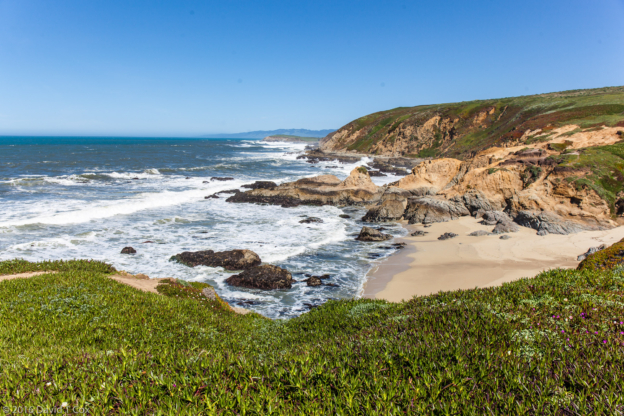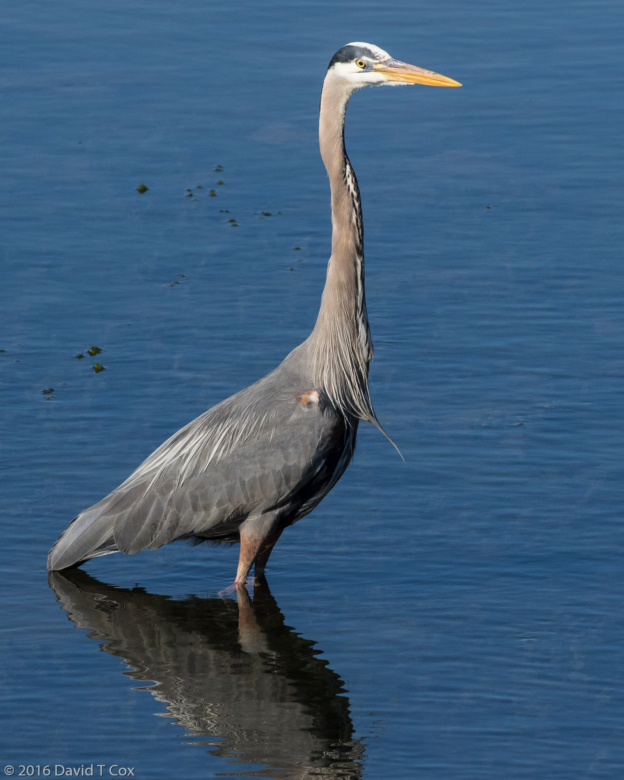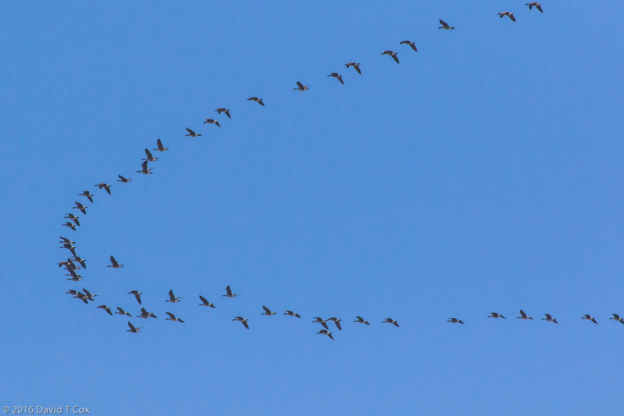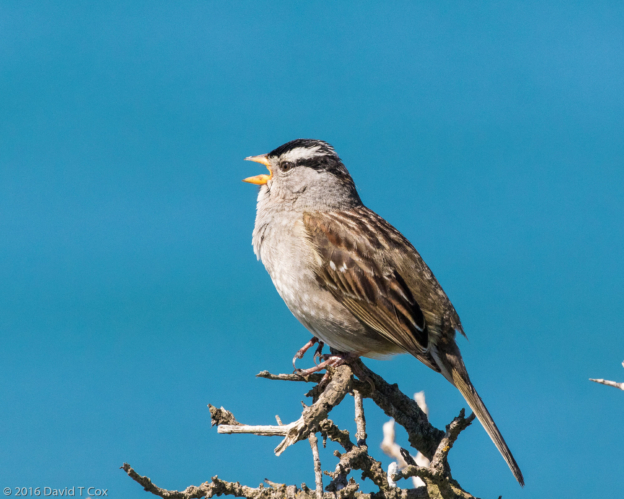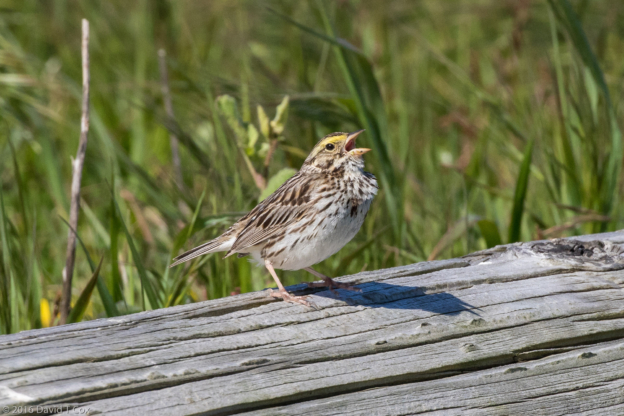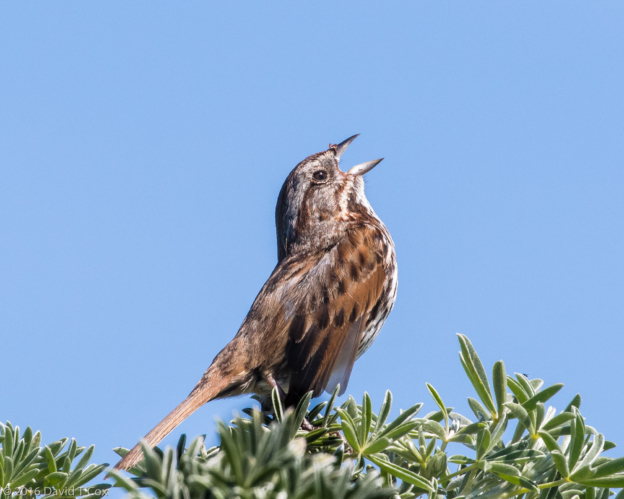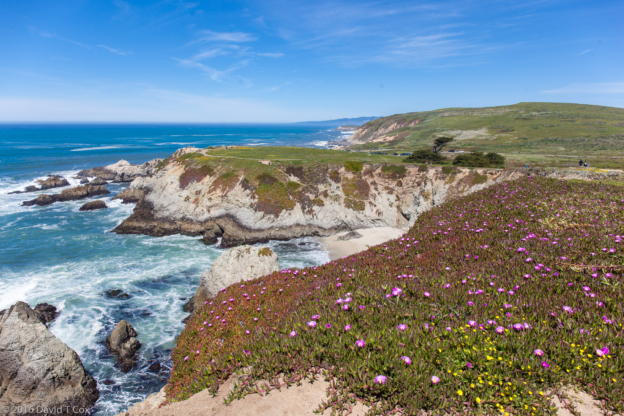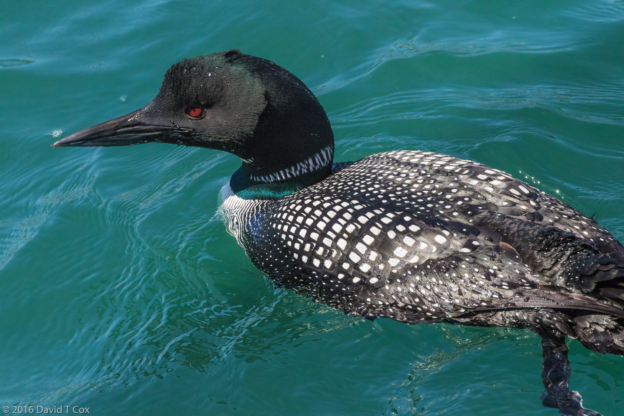All Photos Are Below the Travelogue Text
Click on Any Photo To Open Slide Show
To print the travelogue, right click anywhere on the page. Choose "Print" from your browser dialog box. You can choose Save to PDF in the browser print window.
Share your thoughts.
Email Dave - coxdavid55@hotmail.com
Hello all. Five days, in and around Yosemite National Park, provided unique and transient beauty. Fires had scorched sections of the forests on the northwestern entrance side, but wildflowers were everywhere along the roads climbing and descending the mountain passes. Yosemite Valley presented 7 major waterfalls, all engorged by the heavy winter snowmelt and recent rainfall. The valley floor was lush green with a number of trees in bloom. The rivers and streams filled their banks and presented cascades at every turn. El Capitan, the granite cliff face, rises vertically well over 1 kilometer (3,600 ft.) above the valley floor, and is one of the largest exposed granite monoliths in existence.
I spent much of my first early morning in the park photographing, from the far side of the valley, the Upper and Lower Yosemite Falls disgorging exceptionally large volumes of water. Due to recent rains, small streams and water pools existed on the valley floor which normally would not be there. This permitted photos with foreground reflections providing great color depth. I took multiple series of shots, from different vantage points, in order to produce composite “big” prints of the scene.
I visited the Ansel Adams Gallery, which, rather than being a museum as I had hoped, was a store selling prints of many photographers, including Adams. They did have large copies of many of his best Yosemite photos. Nearby I enjoyed, each day, a large coffee in place of lunch, sitting outside and photographing the ever present Steller Jays, Rock Squirrels and Red-winged Blackbirds.
I stayed in an RV park in the tiny gold rush town of Groveland, some 25 miles outside the park’s northwest entrance. I previously wrote about finding breakfast in the Iron Door Saloon, reputed to be the oldest continuously operating drinking establishment in California (note the use of the phrase “drinking establishment”, rather than “saloon”, as during prohibition the old photos show the outdoor sign advertising only “cold soda”). I had supper there a couple of evenings for their wonderful homemade soups.
As in all parks I have visited over the years, early morning from first light until about 9am provides a fair amount of solitude and most wildlife viewing – from about 9am on the roads fill with crowds of tourists and solitude ceases unless one is willing to hike off the major roads. Yosemite parking lots become almost full by mid-day – this is in mid-April. Summer must be overwhelming. My last day in the park I spotted two climbers about 1,000 feet up the side of El Capitan. The one with a bright red shirt was just visible as a speck to the naked eye. I understand it normally takes over 4 days for climbing parties to ascend, spending the nights hanging in special “tents” from the cliff face. Not for me.
From Groveland I drove northwest across the state to Bodega Bay on the coast, sliding between the San Francisco Bay area and Sacramento. Crossing major freeways, with their 6 lanes of heavy traffic, I took wrong turns several times, having to make U-turns to regain my route. Most of the distance was driven on the small California state highways, 2 lane roads, but packed with traffic, particularly big rigs. The scenery is pretty, but California has installed concrete barriers down the middle of many two lane highways to prevent any passing and head-on-collisions. This, along with rush-hour-like traffic, pretty much destroys any scenic appeal. The small roads cross a number of weird draw bridges which span the inland bay and rivers – at one of these traffic was stopped and I watched the workings of the bridge. Rather than two sides opening upward, the entire central span of the bridge rotated sideways 90 degrees to create the opening. I have not seen this before.
Bodega Bay is a very small town situated along a gorgeous stretch of coast and rocky headlands. I stayed in a lovely, though rather expensive, RV Park – very few campers on Thursday, but over the weekend it absolutely filled every available space. I believe 100% of the huge RVs had California plates. This was an experience similar to others I have had in every national park in California. Apparently the state is so populous that the national and state parks fill with residents. A far cry from my experiences in most national parks outside California where the majority of campers are foreign or from out-of-state (I did meet some Europeans at my camp in Groveland).
I spent two days walking along some marsh lands by the coast, and walking around the rim of Bodega Head, a mountain which forms the seaside arm of the bay, and is surrounded on the open Pacific side by sheer cliffs and roiling surf on the rocks below. The mountain top is covered with various species of wild flowers, and is habitat to at least 5 sparrow species. All the male sparrows are singing from the high points of the low shrubs (see photos). The bay itself contains a large marina, at which were docked two wooden “tall ships” from Oregon for the week. Several species of grebes and the common loons (which I have not seen before) were diving for fish in and around some of the marina walkways.
I met a bird watcher up on Bodega Head, where the grey whale watchers congregate. He helped confirm some of my identifications of difficult species (3 different species of cormorants were present). Sitting in a chair on the cliff face he kept swatting and killing the very annoying, longish flies that were bothering us. I asked him what they were, and if they were biting; he replied they were kelp flies, and they did not bite – they were just nuisances. He said he was teaching them to stay away. I noted that, as they each were being methodically killed, they probably were not learning anything. He then clarified that he was “teaching” the species through evolutionary pressure – he had taught each of his daughters to kill every kelp fly that landed, and they would teach their children and grandchildren, and eventually the genes which give the flies the proclivity to land on humans would disappear, as those flies all will have been killed, hopefully before reproducing. I thought long and hard about this, and did some complex mathematical modeling on the back of a beer napkin (of course that is where I would do such modeling), and concluded he may have a valid idea. Sometime, just a little before our sun grows to a red giant and bakes the earth, he will have produced enough descendants with the proper training to eradicate the “human-bothering” gene with which the flies obviously are afflicted. Of course, by waiting just a handful of eons longer, the sun would engulf the earth and eradicate the gene anyway. Nevertheless, there is something really satisfying about being able successfully and consistently to swat extremely annoying kelp flies when they land.
From Bodega Bay, on Sunday, I drove the roughly 100 miles north to Fort Bragg, all on the famous California SR 1, which winds up and over the seaside cliffs which mark the northern California coast. It really is a beautiful drive, but in many places one averages a scant 25mph. I will continue north from here, in a day or so, to the Redwood National Park. I see more rain is in the forecast for much of this week. Oh well, that is normal for spring in the northwest coast. Later. Dave
- Yosemite Falls, Yosemite NP, CA
- Rock Squirrel, Yosemite Village, Yosemite NP, CA
- Cascade Creek, Yosemite NP, CA
- Red-winged Blackbird female, Yosemite Village, Yosemite NP, CA
- Bridalveil Falls, Yosemite NP, CA
- El Capitan, Half Dome & Bridalveil Falls from western Yosemite Valley, Yosemite NP, CA
- Western Scrub Jay, Yosemite Pines Park, CA
- El Capitan, Yosemite NP, CA
- Western Grey Squirrel, Yosemite NP, CA
- Half Dome, Yosemite NP, CA
- Bodega Head, Bodega Bay, CA
- Western Gull breeding, Bodega Bay, CA
- Great Blue Heron, Bird Walk, Bodega Bay, CA
- Canada Geese, Bird Walk, Bodega Bay, CA
- Eared Grebe, Bodega Bay, CA
- White-crowned Sparrow, Bodega Head, Bodega Bay, CA
- Savannah Sparrow subsp “Beldings” threatened, Bodega Head, Bodega Bay, CA
- Song Sparrow, Bodega Head, Bodega Bay, CA
- Bodega Head, Bodega Bay, CA
- Common Loon, Bodega Bay, CA
To print the travelogue, right click anywhere on the page. Choose "Print" from your browser dialog box. You can choose Save to PDF in the browser print window.
Share your thoughts.
Email Dave - coxdavid55@hotmail.com
